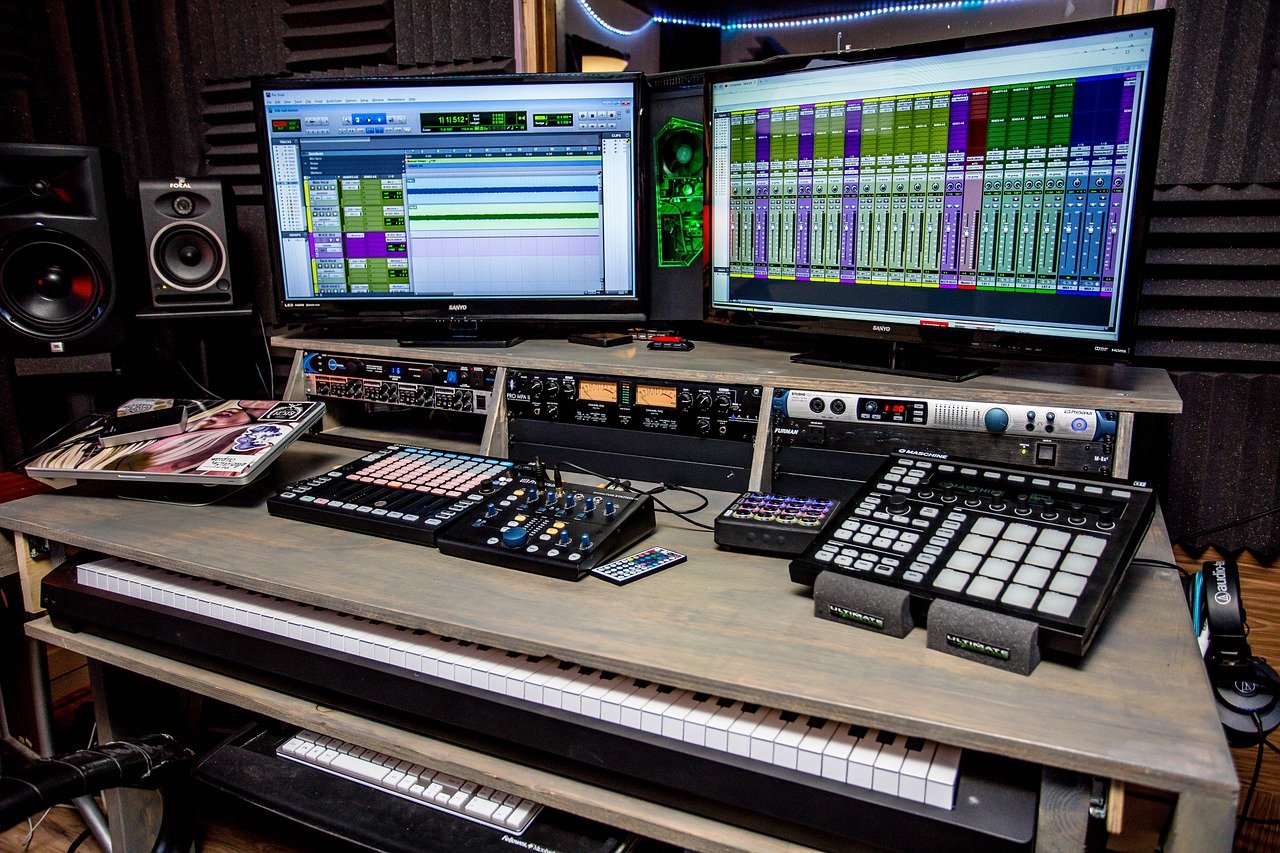As an electronic music producer, your digital audio workstation (DAW) is your most empowering tool. It’s like having your entire creative studio—paintbrushes, palette, easel, and canvas—at your fingertips. Just as a chef looks forward to creating delicious meals in the kitchen, you, as a producer, anticipate the creative journey that comes with choosing and mastering a new DAW.
Also Read More – Mixing Music In Dolby Atmos – Everything You Need To Know
A DAW: What is it?
A digital audio workstation (DAW) is a program that transforms your computer into a music studio. It’s not just about audio editing, arranging, mixing, and post-production. It’s about the evolution of music creation. Undoubtedly the Daw has came a long way and is quite capable of doing tasks which no one has even thought off. The progress has inspired many to push out their creative boundaries and this is the reason why most of the music nowadays is developed with Daw or digital audio workstation.
read more – 10 Mistakes Every Beginner Does in Music Production & Beat Making
History of DAW
At first, digital audio workstations had only MIDI transmitters. In a predetermined sequence, these gadgets would send pre-written MIDI clips to MIDI-capable instruments like synthesizers and drum machines. It was simple, yet it changed how music might be composed and played. The instrument could now play itself by reading and repeating MIDI messages in the correct sequence, negating the need for a live performance.
These straightforward systems have expanded over the years to include functions like audio editing, digital and analogue recording, and multi-track mixing.
Apple, Commodore, AKAI, and Atari were some of the businesses that began producing these home computing systems. As a result, thousands of new purchasers could access the market. Suddenly, you could make a record without a top-notch recording studio or session players. You may complete this assignment on your home computer with a digital audio workstation (DAW) and a few electrical instruments.
It was really amazing if we go down the history an dchecout the time when Daw was invesnted and people loved it. As it was not just the new musical style that was coming forward but the whole new arens of music was coming out and opening their doors for everyone. Many talented players and their recording facilities can be accessible for people who loves Daw and are passionate for music. This inclusivity sparked a wave of creativity, leading to the birth of unique musical genres and styles. ( Dolby Atmos Music Mastering )
Let’s start this compilation of reviews.
- AVID Pro Tools is this. A.W.A:
Digital audio workstations (DAWs) vary in their opinions on Pro Tools; some users love it, while others detest it. Despite this, it remains one of the industry’s most used pieces of software for creating high-quality music.
AVID Technology is the company behind Pro Tools, which works with Windows and OS X. It can be used independently or in conjunction with digital or analogue converters.
- DAW (Logic Pro X) software
Notator Logic was the previous name of Logic Pro. Early in the 1990s, the German software company C-Lab began developing it. Since then, it has gained popularity and is among the most well-known digital audio workstations (DAWs). Apple is currently developing it.
- Ableton Live 10, a digital audio workstation
The original Ableton Live was released as a relatively simple loop arrangement tool. Upon its initial release, it quickly expanded to become a fully functional VST host and digital audio workstation.
It is primarily used for live performances and song remixing, but it may also record music and be used for various other things depending on its capabilities. It is the pinnacle of digital output. ( Mixing Music In Dolby Atmos – Everything You Need To Know)
Ableton also has many options that can be tailored to accommodate different ability levels. There is the Ableton Live 10 Lite edition, the Suite, and the basic version of Live 10.
- Digital Audio Workstation REAPER 5
We have already covered this digital audio workstation (DAW) in our guides for beginners and experts on Reaper.
Unlike most other digital audio workstations (DAWs), Reaper offers a fantastic sixty-day free trial period, which enables users to get a feel for the program and determine whether or not it meets their needs. Compared to most free trials offered by numerous other businesses, a two-month trial period is reasonably generous.
- The Steinberg song Cubase 11
Music can be produced with the powerful digital audio workstation Cubase. Its quirks and procedures must be followed, just like any other digital audio workstation (DAW), but the basic controls are easy to understand and use. Because of this, beginners will find Cubase to be relatively easy to use and convenient.
Unlike most other digital audio workstations (DAWs) that first catered just to audio, Cubase was first and primarily a workstation that supported MIDI controllers. But that was thirty years ago, and it has all the features you would expect to find in a digital audio workstation (DAW) today if not more.
With the assistance of this service, you will be able to construct folders and subfolders, enabling you to have a complete representation of your catalogue on the system. The music supervisors are prepared to move forward with the process because they have all of the artists, projects, masters, and tracked-out sessions ready to be forwarded to remixers or music supervisors who are seeking their next track to sync. You must visit the sync site to ensure that your music gets distributed to various media outlets. Check to see that all of the information regarding the music has been registered to guarantee that you will be compensated.


Leave a Reply